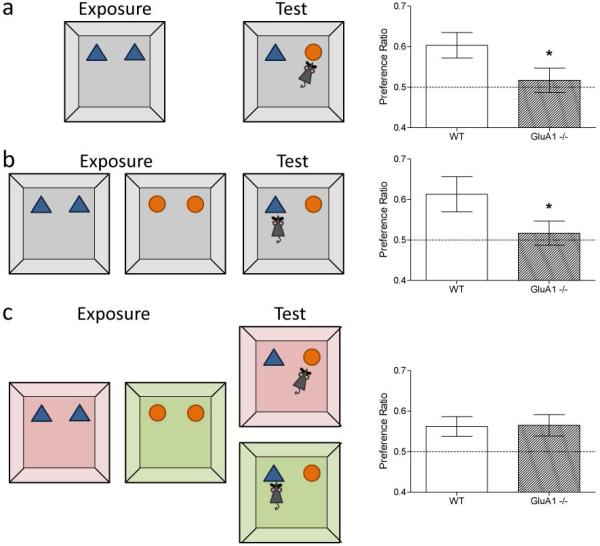Figure 1. Gria1−/− mice display impaired short-term habituation on the novel object recognition test.

a. The top left panel shows the design of the standard novel object recognition task. In the Exposure phase (10 min duration) wild-type (WT) mice were exposed to two copies of an object and then after a 2 min interval they received a 5 min Test in which they were allowed to explore a duplicate of the familiar object and a novel object. The levels of object exploration for Gria1−/− mice for both exposure and test phases were yoked to WT mice. The times spent exploring the novel object during the test phase are shown as a ratio of the total time spent exploring both objects. The dashed line at 0.5 indicates chance performance. Gria1 deletion impaired memory on the standard object recognition task (right panel). Error bars indicate ±S.E.M. b. The middle panel shows the design of the object recency task. In the Exposure phase wild-type mice received two 10 min exposures to two different objects separated by a 2 min interval. The Test phase (5 min duration) commenced 2 min after the last exposure. Mice were allowed to explore the more recently and the less recently presented objects. The levels of object exploration for Gria1−/− mice for both exposure and test phases were yoked to WT mice. The times spent exploring the less recently experienced object are shown as a ratio of the total time spent exploring both objects. The dashed line at 0.5 indicates chance performance. Gria1 deletion impaired memory on the object recency test (right panel. Error bars indicate ±S.E.M. c. The bottom panel shows the design of the context-dependent object recognition task. In the Exposure phase two different objects were exposed in two different contexts. WT mice received four 10 min exposures to each object, one per day for four days. On the fifth day mice were simultaneously exposed to both objects in both of the contexts in two 5 min Tests. The levels of object exploration for Gria1−/− mice for both exposure and test phases were yoked to WT mice. The times spent exploring the object not previously paired with the test context (i.e. the unpaired object) are shown as a ratio of the total time spent exploring both objects. The dashed line at 0.5 indicates chance performance. Gria1 deletion did not impair context-dependent object recognition task (right panel). Error bars indicate ±S.E.M. (Data from93).
